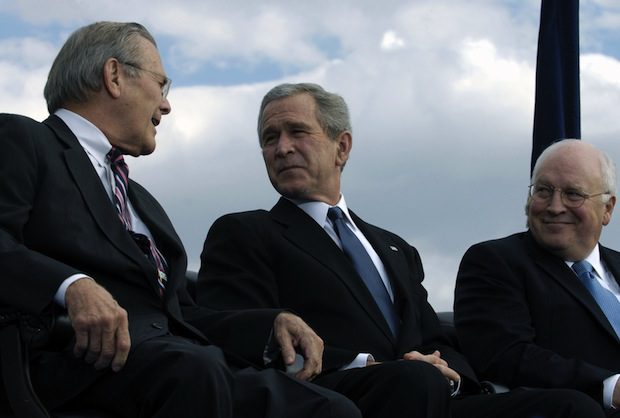How Threat Inflation Wrecks the World

Micah Zenko warns against the pitfalls of imagining that the world is becoming increasingly dangerous:
The practical consequences of misremembering a supposedly stable global past, and misrepresenting the allegedly threatening present (and future), are many. The first is the habitual practice of foreign threat inflation, which we detail exhaustively in our new book, that results in over-reactionary policies best represented by the staggering $4 trillion spent overseas in post-9/11 wars.
Second, and relatedly, perpetual threat escalation leads to disproportionately spending finite taxpayer resources on the military, as there is nothing more responsive to counter purported threats than troop deployments or uses of force.
Third, it enables a strategic misdiagnosis about what actually threatens the American people—threats that are almost exclusively domestic, including guns, drugs, and noncommunicable diseases—and where to apportion the greatest attention and resources to mitigate and prevent such threats.
It can be easy to forget previous dangers because they were either held in check or passed away over time, but it is a mistake to conclude that the world today is a much more dangerous place than it was 30 or 40 or 50 years ago. That is unsupported by the evidence, and it empowers alarmists and fear-mongers that are taking advantage of the relatively greater security we enjoy today to stir up trouble and stoke conflicts that could otherwise be avoided. Everyone that promotes the fiction that the world is more dangerous than ever is relying on the public’s historical ignorance and has a vested interest in spreading fear about supposedly unprecedented, myriad threats. These claims come from military officers that need to exaggerate threats to justify their budgets, they come from politicians and policymakers that need an excuse for aggressive policies overseas, and they come from media outlets that blow limited threats way out of proportion to get attention and ratings. As long as they can make their extravagant requests and proposals seem like a necessary response to growing peril, the alarmists face fewer hard questions and can get away with much les persuasive answers. Perversely, today’s threat inflators benefit from their predecessors’ hyperbole. A previous generation of fear-mongers’ worst warnings about foreign threats never materialized, and so a new generation can make it seem as if things have become much worse in the ensuing decades.
There is also a tendency to imagine that international politics was somehow “simpler” or more straightforward during the Cold War, but all that this really means is that policymakers frequently oversimplified conflicts and crises that were every bit as complex and confusing as those we have today by applying a reductive ideological filter to them. The Cold War was both much more violent for many nations around the world and much more dangerous for the entire world, but because it fortunately ended without a global conflagration it has been easy to downplay the costs and the perils of that conflict. The “long peace” was bought at the cost of millions of lives in Asia that we also tend to forget. Modern alarmists can make it seem as if a few armed conflicts today represent the collapse of “world order” when there used to be many more and more costly wars a few decades earlier.
To make matters worse, the same alarmists that spread misinformation about an increasingly dangerous and chaotic world are almost always among the leading advocates for U.S. military action overseas. They won’t admit it, but they are among the chief authors of causing chaos and upheaval in other parts of the world, and then they cite that very same disorder as proof of how perilous the world has become and use the disorder they created as a new pretext for expanded meddling and intervention. The threat inflators sell the public on wars that supposedly eliminate the threats they exaggerate, but in practice their wars only exacerbate problems that were already there or create new ones where they hadn’t existed before. By constantly harping on our imagined insecurity, they do enormous harm to many other countries, they cost the U.S. dearly, and they contribute to the wrecking of the world.
Comments